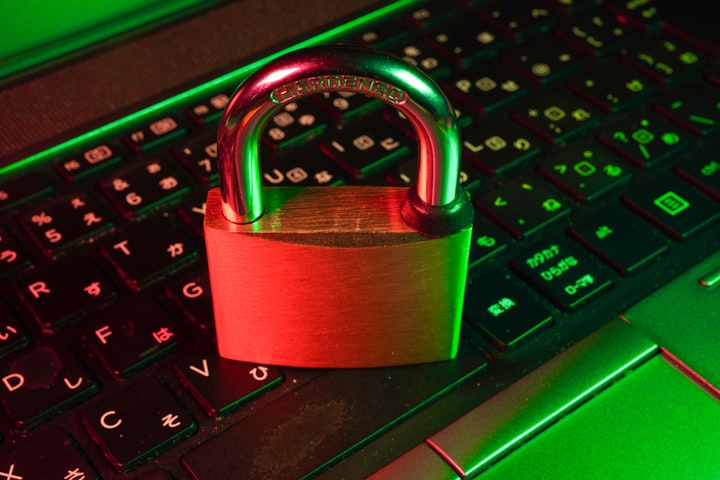Introduction:
ChatGPT is a revolutionary chatbot that was released by OpenAI in November 2022. Based on the GPT-3.5 architecture, ChatGPT uses advanced natural language generation technology to create human-like text from a small input. This makes it an ideal tool for various purposes such as writing essays, code, and poetry, as well as having fun and engaging conversations.
However, despite the many benefits that ChatGPT offers, it also poses a significant threat to cybersecurity. The technology can be used by malicious actors to create phishing emails, malicious code, or other harmful content that can cause serious harm to individuals and organizations. This article will explore the potential risks posed by ChatGPT and provide tips on how to protect yourself and your organization from such attacks.
Understanding the Threat:
Phishing Attacks:
Phishing attacks are one of the most common types of social engineering attacks that target individuals and organizations. In a typical phishing attack, the attacker sends an email that appears to be from a reputable source, such as a bank or a social media platform, requesting sensitive information such as login credentials or credit card details. The email usually contains a link that takes the victim to a fake website that looks like the real one, but is designed to steal the victim's information.
ChatGPT can be used to create convincing phishing emails that are tailored to the recipient's context and preferences. The chatbot can mimic the writing style and tone of a real person, making it difficult for the victim to detect the attack. In addition, the technology can generate realistic-looking URLs and logos, making the fake website appear authentic.
Malicious Code:
Malicious code is a type of software that is designed to harm the victim's device or steal their data. Malware can be distributed in various ways, such as through email attachments, downloads, or malicious websites. Once installed on the victim's device, malware can be used to collect sensitive data, encrypt files, or take control of the device.
ChatGPT can be used to create malicious code that is tailored to the victim's device and operating system. The chatbot can generate code that is designed to evade antivirus software and firewalls, making it difficult for the victim to detect and remove the malware.
Why ChatGPT is Dangerous:
ChatGPT is dangerous because it can produce text that is grammatically correct, coherent, and tailored to the victim's context and preferences. The technology can mimic the writing style of real people based on samples of their communications, making it difficult for the victim to detect and avoid phishing and malware attacks.
Moreover, ChatGPT is accessible to anyone with an internet connection and does not require any technical skills or knowledge. This means that anyone can use ChatGPT to create harmful content for phishing and malware attacks, increasing the volume and variety of cyberattacks and making them more difficult to prevent and mitigate.
Protecting Yourself from ChatGPT-based Attacks:
Here are some tips on how to protect yourself and your organization from ChatGPT-based attacks:
- Always verify the sender's identity and the source of the message before opening any links or attachments. Do not rely on the sender's name or email address alone, as they can be easily spoofed. Check for spelling or grammatical errors, unusual requests, or suspicious URLs.
- Do not provide any personal or financial information via email, phone calls, text messages, or social media. Legitimate companies or organizations will never ask you for such information unsolicited. If you are unsure about the authenticity of a message, contact the company or organization directly using a trusted channel.
- Use antivirus software and update it regularly. Antivirus software can help you detect and remove malicious code from your device. Ensure that you have the latest version of your antivirus software and scan your device frequently.
- Back up your data regularly to restore your data from a backup in case your device gets infected by malware that encrypts your files or locks your device. Use an external hard drive or a cloud service to backup your data and keep it separate from your device.
- Educate yourself and others about ChatGPT and its potential risks. ChatGPT is a new and evolving technology that many people may not be aware of or understand. Learn more about how ChatGPT works and what it can do. Share this information with your friends, family, colleagues, and customers
The Role of AI in Cybersecurity
As AI and machine learning technologies advance, they are increasingly being used to enhance cybersecurity. AI can help detect and prevent cyberattacks by analyzing large amounts of data and identifying patterns and anomalies that may indicate an attack. AI can also be used to automate cybersecurity tasks, such as threat detection and response, and to provide real-time alerts and recommendations to security teams.
However, AI can also be used by cybercriminals to develop more sophisticated and targeted attacks. For example, attackers can use machine learning algorithms to generate phishing emails or create deepfake videos that impersonate real people. This can make it even harder for users to detect and prevent cyberattacks.
Therefore, it is important to develop AI-based cybersecurity solutions that can keep up with the evolving threat landscape. This requires collaboration between AI experts and cybersecurity professionals to develop effective and ethical AI models and algorithms that can detect and prevent cyberattacks without compromising user privacy or security.
In addition, it is important to educate users about the potential risks of AI-based attacks and provide them with the tools and knowledge they need to protect themselves. This includes teaching users how to identify and avoid phishing emails, how to use antivirus software and firewalls to protect their devices, and how to backup their data to prevent data loss in case of a cyberattack.
Conclusion
ChatGPT is a powerful AI-based chatbot that has many useful applications, but it also poses a serious threat to cybersecurity. Cybercriminals can use ChatGPT to generate convincing phishing emails and malicious code that can harm users' devices and steal their data.
To protect themselves from ChatGPT-based attacks, users need to be vigilant and cautious when dealing with online communications and content. They should always verify the identity of the sender and the source of the message, avoid providing personal or financial information via email or social media, use antivirus software and backup their data regularly, and educate themselves and others about the potential risks of AI-based attacks.
In addition, it is important to develop effective and ethical AI-based cybersecurity solutions that can detect and prevent cyberattacks without compromising user privacy or security. This requires collaboration between AI experts and cybersecurity professionals to develop advanced and adaptive AI models and algorithms that can keep up with the evolving threat landscape.
Overall, the growing use of AI in cybersecurity presents both opportunities and challenges for users and security professionals alike. By staying informed, proactive, and collaborative, we can leverage AI to enhance our cybersecurity defenses and protect ourselves from cyber threats.






Comments
There are no comments for this story
Be the first to respond and start the conversation.